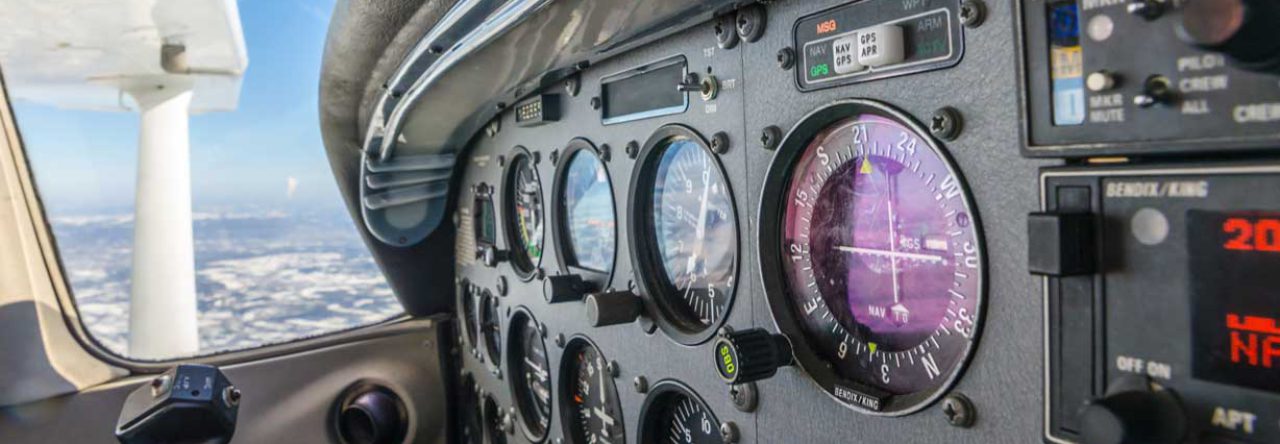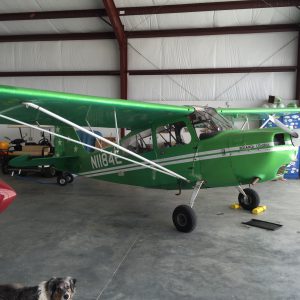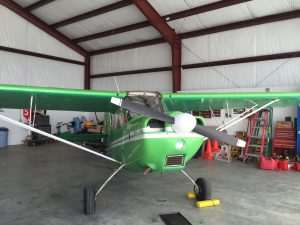So today, much like the previous couple of lessons, the weather just isn’t cooperating for a real flight. So back to the sim we go to work on fundamentals with more twists, turns, spirals, etc…
I have to be honest, even though the sim is twitchy and I am not aloft in the wild blue yonder, I do kind of enjoy the exercises. Today we started the same way as last lesson with a low vis takeoff and then tracking the LIB VOR.
We performed an exercise to validate the turn coordinator. We calculated bank angle based on the speed of the aircraft.
(True AirSpeed/ 10) * 1.5 will give you the bank angle for a standard rate turn.
In order to prove this point, we tried 120 kts and 80 kts in order to see that the turn coordinator always read correctly even though our bank angles were different for the different speeds. Neeto!
Next We jumped right into the Pattern A to get warmed up. I thought all was well but somewhere in the haze of everything, I completely missed a 45 degree right turn, so my final track was a bit askew. Outwardly, I kind of shrugged it off but inwardly, I had my first signs of doubt. If I would have missed this in the air, for realsy, I would be lost. Why did I not pick up on that sooner? I guess this is all part of the learning process.
We next moved on to a new pattern, Pattern C. My instructor gave me this pattern at the end of the previous lesson and I meant to try it on my sim at home first. The best that I got, was looking over it yesterday a bit. I knew that this was going to be an interesting pattern. You be the judge (Below).

Pattern C
Two of 270 degree and two 450 degree turns with mixed climbs and descents, I made the comment that there was no way this was going to go well. My reservations aside, I jumped into the flying and took it one step at a time. (PSA: I am using the term “Flying” here pretty loosely since I am in a room… in a converted car seat in front of a computer. But hey… it works.)
I won’t bore you with the details but overall I think I did fairly well. The big takeaway from this exercise is that by memorizing your pitch/power settings and if you can stay at least one step ahead of the airplane, you will be ok. For me, it helps to constantly brief. After a turn, brief the next leg, then brief the next turn… just keep talking. I am pretty sure that is what my instructor is looking for but it really does help me.
After the C pattern, we worked on a few partial panel exercises, vacuum failures and then pitot static failure. My instructor would pose as ATC calling out headings and throwing in a climb and descent at certain locations. Pitot static failure is where really knowing your pitch/power settings help you tremendously. Since you don’t have an airspeed indicator, knowing that a certain RPM and pitch attitude gives you a resultant airspeed. You can also climb and descend at a given airspeed by the same chart. It was actually really cool…. like magic!
Lastly, we performed some compass based maneuvers. Working on UNOS, (Undershoot North, Overshoot South). We worked on 180’s and 360’s to see how this effect worked. Honestly, the simulator didn’t do a very good job of the lag or the lead on the turns. We will work on this again in the real aircraft.
Overall it was a pretty good session. Still looking for the elusive real aircraft lesson. I am hoping that the foundation that I have been building in the sim, translates to the real world. We shall see! And you will hear about it!







